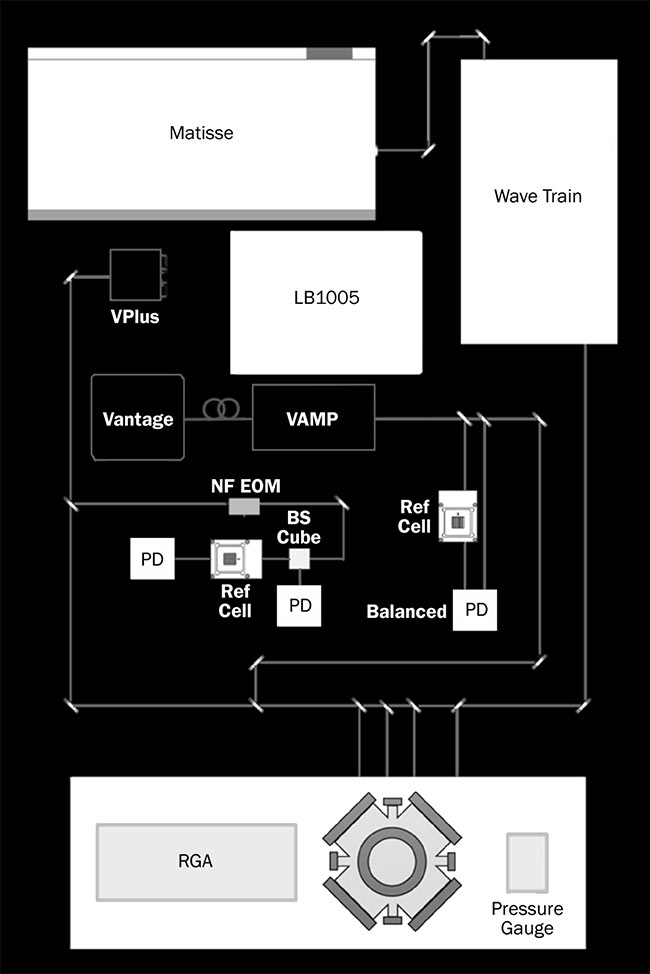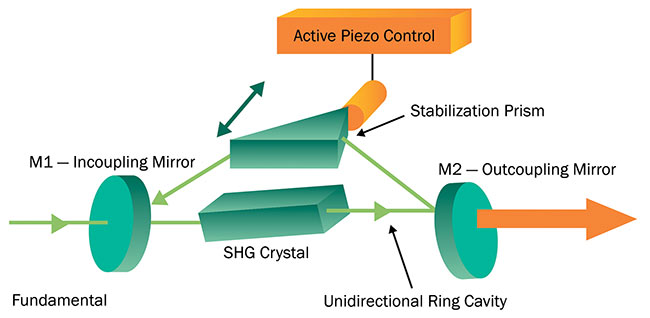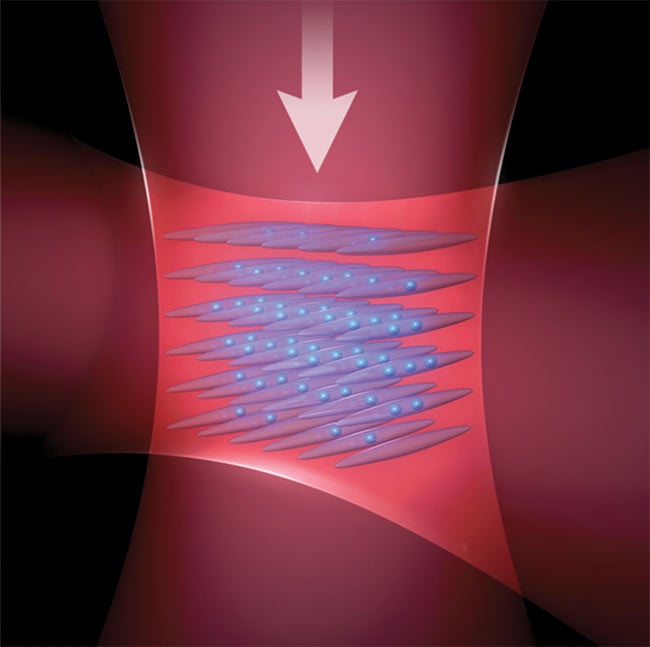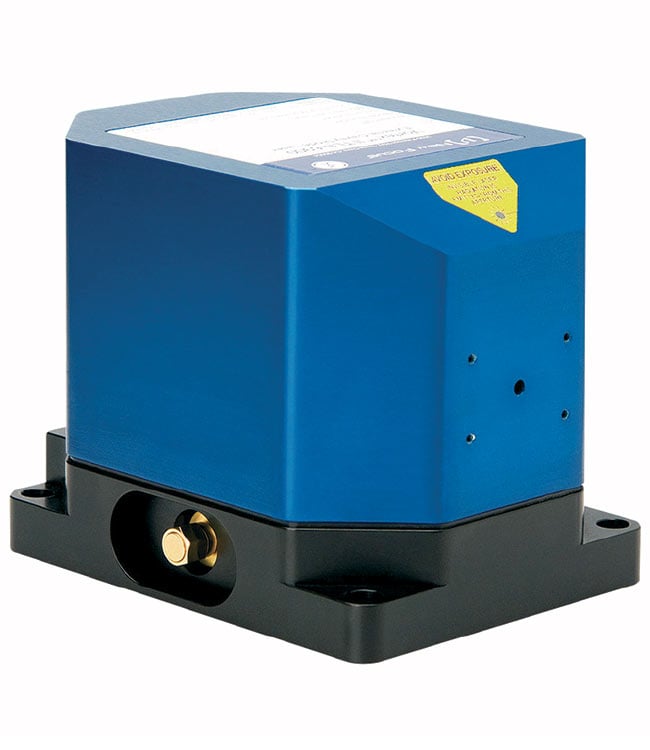As quantum initiatives receive increased attention and funding worldwide, the photonics industry will play a critical role in emerging technologies.
DIANA POULLOS, SPECTRA-PHYSICS
Quantum technologies encompass diverse fields that include computing, cryptography, and sensing. Quantum theory, first presented by Max Planck at the turn of the 19th century and followed by the theoretical foundation developed by Albert Einstein, is the fundamental basis of quantum physics and has led to a better understanding of our world, and inspired numerous technologies.
As the limitations of instruments based on classical physics are reached, these instruments will be replaced by enhanced technologies capable of delivering higher performance. Government initiatives, photonics, and laser technologies are all affecting this rapidly developing field and its applications.
The strong worldwide motivation for development of quantum technologies is evident in the marked increase in government funding. Common themes among initiatives include the establishment of centers of excellence and the bridging of research and industry. From an economic perspective, centers of excellence attract global talent and foster qualified workforces that allow communities to participate in and benefit from the emerging quantum market.
Initiatives
The European Union Quantum Flagship program has funding of €1 billion ($1.13 billion) over a 10-year period, with an aim to coordinate European scientific leadership to promote collaboration. They envision a “quantum web” that includes computers, sensors, and simulators interconnected by quantum networks. U.K.’s Quantum Technology Hub, funded at £270 million ($338 million) over 10 years, is composed of a network of four focus areas: sensors and metrology, quantum enhanced imaging, networked quantum information technologies, and quantum communications technologies.
The Prosperity Partnership in Quantum Software for Modeling and Simulation was formed in 2018 as a collaboration between Google Quantum AI Lab, the University of Bristol’s Quantum Information Institute, the University College London’s Quantum Science and Technology Institute (UCLQ), along with two U.K. startup companies, the Global Traffic Network (GTN) and Phasecraft. The partnership aims to lay the foundation for the quantum software industry in the U.K.
In the U.S., the National Quantum Initiative Act, which was presented to Congress in 2018, aims to launch a 10-year program to coordinate funding provided by the Department of Energy (DOE), the National Science Foundation (NSF), and the National Institute of Standards and Technology (NIST) for quantum research and development. If the bill is passed, the DOE would be allocated $125 million annually and would competitively award up to five research centers. The NSF would be allocated $50 million annually and, similar to the DOE allocation structure, would competitively award up to five multidisciplinary centers for quantum research and education, with the proviso that it would support both short- and long-term workforce needs. The U.S. Committee on Commerce and the U.S. Senate Committee on Armed Services are both seeking to launch similar R&D programs.
None of this would have been possible without prior scientific discoveries and developments. Atomic physics is a key research area that makes exploring quantum phenomena possible. In particular, laser cooling and trapping, and experiments requiring components and instruments that span optical tables and laboratories, have led to breakthrough discoveries.

Figure 1. A wide range of photonics components are used in quantum applications. This is a very simplified schematic of an atomic cooling experiment and includes a tunable ring laser, a resonant doubler, tunable ECDLs (external cavity diode lasers), a tapered amplifier, servo controller, pressure gauge and residual gas analyzer (RGA), an electro-optical modulator, photodetectors (PDs), and optics. The laser path is shown in white. Courtesy of Spectra-Physics
By developing and supplying light sources, optical and mechanical components, motion instruments, and ultrahigh vacuum products, the photonics industry provides numerous enabling components, products, and technologies, and will play an integral role in helping foster progress in the rising quantum economy (Figure 1).
Frequency-stabilized tunable lasers
The CW ring laser provides frequency stability, narrow linewidth, and wavelength tenability, which are important performance parameters for quantum applications requiring excitation of spectrally narrow atomic transitions. Ring lasers, named for the photons within the laser cavity that follow unidirectional propagation, prevent photobleaching of the laser gain medium, often Ti:sapphire.
While CW ring lasers are not new to the market, ease of use and compact footprints have been a trend over the past few years. Computer-controlled wavelength tuning and automatic pump-beam self-alignment are standard features today. Tuning ranges have expanded and tunability is possible across the Ti:sapphire emission spectrum with appropriate optics, covering a wavelength range greater than 300 nm, from <700 nm to >1000 nm, without the need to change components.
Pump lasers, which have increased in power in recent years, have reached 25 W,
to deliver over 7 W at 800-nm output from the ring laser. Active frequency stabilization can narrow the linewidth down to tens of kHz as a standard option, and the linewidth can be further reduced with highly stable reference cavities, even down to the level of 1 Hz.

Figure 2. Pictorial representation of a patented delta ring resonant doubling cavity, an alternative to the conventional bowtie cavity. The triangle-shaped configuration allows the cavity length to be adjusted with no effect on output beam position, direction, or beam astigmatism, and requires only two cavity mirrors (as opposed to four in a bowtie resonator) for consistent harmonic efficiencies >35 percent. SHG: second-harmonic generation. Courtesy of Spectra-Physics
Using harmonic conversion, wavelengths across the UV and VIS and into the MIR can be realized to access an even broader range of atomic transitions and quantum applications. Techniques such as resonant second-harmonic generation (SHG) and wavelength mixing are used for efficient harmonic conversion (Figure 2).
The tunable external cavity diode laser (ECDL) is another common laser source used in atomic physics. The platform incorporates a semiconductor diode laser into an external cavity to provide stable, single-mode operation and narrow linewidth. Wavelengths are limited by the availability of suitable diodes and the narrow gain bands of the semiconductor material. While ECDLs have an output power lower than that of ring lasers, they offer a low-cost solution as well as power amplification to the watt level at common wavelengths, with semiconductor tapered amplifiers.
For many experiments, wavelength needs are specific, and wide wavelength tuning capability is not necessary. Most commonly, NIR wavelengths are used, for example, at atomic transition lines for cesium and rubidium. However, blue wavelength ECDLs are also available and are a simple alternative to harmonic generation techniques.
Atomic clocks
Tunable CW laser technology applications include atomic clocks, quantum computing, and new endeavors to create optical traps in microgravity environments. There are now networks of atomic clocks on satellites. Typically, each satellite houses four atomic clocks based on either cesium or rubidium atoms. Wireless phone and data network base stations are synchronized perfectly with the use of GPS time, allowing the limited radio spectrum to be shared efficiently. GPS time is used by digital broadcast radio services and GPS navigation services.
As with all clocks, an intrinsic error causes drift. Atomic clocks may experience drift up to 10 ns per day, and corrections must be applied to keep the clocks in sync on the various satellites. Today, corrected drift accounts for about 1 to 2 m of GPS navigation position error. Effort is being made to further improve the accuracy of atomic clocks.

Figure 3. Artist rendering of strontium atoms trapped in standing waves of light. The strontium optical lattice clock is today’s most precise atomic clock, achieved by Jun Ye at the Joint Institute for Laboratory Astrophysics (JILA). Courtesy of Jun Ye, JILA
The most precise atomic clock today is the strontium optical lattice clock — achieved by Jun Ye at the Joint Institute for Laboratory Astrophysics (JILA) — which works by referencing an ultrastable clock laser to laser-cooled and trapped strontium atoms. Strontium was selected because of its highest-quality frequency references with a quality factor of 1018. Atoms are cooled and then loaded into an optical lattice and trapped in standing waves of light, and the clock laser frequency can be measured against the atomic resonance. Improved atomic clock precision can lead to the measurement of quantities other than time, such as gravity, motion, and magnetic fields (Figure 3).
Quantum computing
Quantum computing is making great strides in what is often referred to as “the race for quantum supremacy.” This supremacy will be achieved the moment a quantum computer is able to outperform a traditional computer system or accomplish a traditionally impossible task. Theoretical studies are underway to determine the number of qubits required to reach quantum supremacy while more powerful quantum computers are developed. In March 2018, the highest qubit quantum computer was unveiled by Google at
70 qubits, displacing the previous record holder, a 50-qubit quantum computer released by IBM in November 2017.
Today’s quantum computers require complex equipment and are thus confined to the laboratory. For example, IBM’s entire system occupies 105 sq ft and consists of a single chip housed inside a canister that is thermally, electrically, and magnetically isolated from the environment. However, computing is available to researchers via the cloud for real-world applications such as pharmaceutical design and development.
While quantum computers are typically semiconductor based, a startup company in Berkeley, Calif., is taking a different approach. Appropriately named Atom Computing, the company plans to build individually controlled atom arrays. By trapping the atoms in specific kinds of traps, the company will access incredibly long coherence times many orders of magnitude longer than competing technologies. Because of the sophistication of optics and structured illumination devices, it is possible to route signals to many atoms without the need to run a wire to every qubit.
Furthering fundamentals
The Cold Atom Laboratory instrument, now operating on the International Space Station, will further advance fundamental research and uncover new quantum
phenomena only observable in microgravity environments. The Cold Atom Laboratory instrument creates Bose-Einstein condensates with magneto-optical traps, and the microgravity environment eliminates the effects of perturbations originating from applied fields, an achievement that is not possible in terrestrial labs.
This results in longer observation times for unconfined atoms that reach over 10 s. The idea is that, by studying unperturbed systems, new quantum phenomena not
yet discovered can be revealed. The Jet Propulsion Laboratory’s approach to developing the Cold Atom Laboratory instrument included using commercially available, off-the-shelf products when-
ever feasible, building on established technologies, and modifying as appropriate. Two examples of commercially available critical components include tunable ECDLs and tapered amplifiers (Figure 4).

Figure 4. The Cold Atom Laboratory instrument on the International Space Station uses tunable lasers and tapered amplifiers for creating and observing Bose-Einstein condensates. The Vortex Plus ECDL was designed to withstand extreme shock and vibration conditions, making it a suitable commercially available, off-the-shelf product to withstand the conditions of a space launch. Courtesy of Spectra-Physics
The photonics industry’s continued contribution to fundamental physics is a testament to its significant role in promoting vital discoveries. Uncovering the next unknown quantum phenomena is sometimes out of this world.
Meet the author
Diana Poullos is senior product manager at MKS Spectra-Physics. She manages CW
ring lasers, ECDLs, and other lasers used in scientific and metrology applications; [email protected].